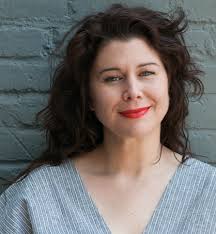by OLIVIA NEAL
Beth Pickens, Your Art Will Save Your Life (Feminist Press, April 2018), pp. 136
Not everyone will like this book because not everyone needs this book.
In Your Art Will Save Your Life, Beth Pickens speaks to artists who struggle to create while the oppressive political moment closes in around them. She offers validation for their feelings and a concrete path forward. Her book is a guide for this very particular group of artists, all of whom are struggling to keep their heads above water during the rising tide of hate and aggression towards marginalized groups. Having worked for many years directly with artists, guiding them in the upkeep of their practices through political and personal turmoil, Pickens has managed to turn her experience into a succinct guidebook full of wit, advice, and reflection.
In her first chapter, Pickens addresses the fact that many artists feel pressured to stop making art in order to focus on actions and careers that are more goal-oriented. Pickens responds by saying that making art is necessary for artists. It’s not a luxury, or even just a tool — it’s imperative to the health and well-being of the artist. With this in mind, she encourages artists to allow themselves the space to acknowledge their artistic needs without feeling guilty or selfish.
“Your work — the work you’re making right now and the work you haven’t dreamt of yet — is going to impact the people who need to experience it,” writes Pickens. “But first, you have to get the work out of you and into the world!”
While everyone could stand to hear that their dreams are important, Pickens is speaking primarily to a specific group of artists — those impacted by the rise in hateful rhetoric brought on by the Trump election — and she isn’t afraid to exclude those who don’t fall into that category. She establishes this early on in the book, with her second chapter, “Election Aftermath,” relating her anguished response to the news of Trump’s win.
“The day after the election, my first instinct was to physically block the White House,” she says. “I would use my body somehow to stop the Republicans from taking over all three branches of the US government.”
If this impulse isn’t something you can understand, then this book is probably not for you. But that’s okay, because it will speak to many of the struggling artists that Pickens envisioned when she put pen to paper, just as it spoke to me. The insecurities and troubles that she talks about are real — I experience them. I often wonder if art is a worthy endeavor right now, with the threat of persecution breathing down the necks of people with marginalized identities. As a queer person, as a woman, and as an American who is impacted by the current administration, it seems to me like science, politics, and law are calling out for bright young minds to help join the fight. But, art is what I know how to do, and Pickens has both meditative guidance and concrete strategies to help me.
The more introspective pieces of advice frequently take the form of upbeat encouragements and reminders to keep joy in your life, even when it feels like joy is impossible or a waste of time. Pickens also asks readers to listen to their inner voice and question whether or not it has helpful things to say. There is an opportunity to explore your family history and what is has taught you about life, work, and art, so that you can become more self-aware about what types of labor work best for you. These parts of the book bring a calming presence to an industry that’s notoriously chaotic.
The more practical strategies detail ways to maintain a successful artist practice and life. Pickens dispels myths regarding scholarships and grants, like “Only famous or well-established artists can get grant funding,” explaining how the process works and elaborating on the possibilities available. She also provides a list of tips for getting a degree in fine arts, for freaking out about the planet, and for living within oppressive political climates. In one chapter, she outlines an artist’s three most basic needs: “an ongoing art practice, a community of working artists, and lots of varied art content.” These and other tips and lists provide a roadmap for understanding the ins and outs of work in a freelance field.
Additionally, many of the suggestions that Pickens gives are based in the desire to help others. She recognizes that people with marginalized identities often feel threatened by the current administration and want to further social causes on a large scale. This book encourages artists to find what they’re most interested in and contribute by doing whatever they’re good at. Her title for this tip is, “Start exactly where you are.” She gives the example of her friend Marcia Chatelain, a professor of history at Georgetown University, who developed a syllabus to help teachers educate on race in response to the murder of Mike Brown in 2014. Pickens says that Marcia started with the resources and skills she had and went from there, and suggests that all artists can do the same.
In other words, Pickens tells a population of young, struggling artists that the tools of their salvation and the creation of new social systems are right in their hands — and in their work. To me, this message is very powerful. If each person with the means to create art felt the kind of encouragement and efficacy that I felt after finishing this book, we might give shape to a movement.
Pickens is not trying to provide lofty, universal aphorisms for the public that will stand the test of time. She writes for a select group of people who need help now. Art can’t survive without the health and prosperity of artists, and Pickens’ years of experience make her an expert at helping them to create their best work. This book concisely communicates her wealth of knowledge so that all the artists who can’t directly work with her nonetheless receive resources necessary for thriving. In this way, Pickens’ workmanlike approach preserves the potential for the kind of powerful, life-altering art that can help us process this difficult political atmosphere and understand our cultural context.
If you’re an artist in need of refuge and advice in this particular political moment, this book might just save your life.



